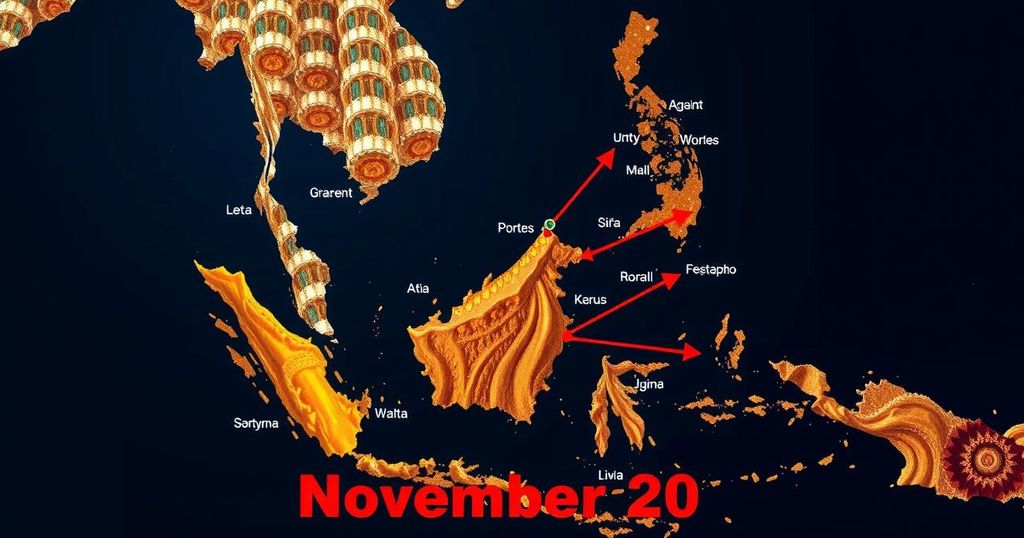Myanmar’s Resistance Forces Push Military Regime to the Brink: A Year of Conflict and Change
A year into a joint offensive by Myanmar’s resistance militias, the military regime is nearing a crisis point as it loses control over significant territories. The successful Operation 1027 has broken a strategic stalemate, pushing the Tatmadaw back towards central Myanmar. Meanwhile, increased civilian casualties due to indiscriminate military strikes have raised humanitarian concerns. Complications arise from the interplay between ethnic militias and the influence of China in the ongoing conflict.
In recent developments in Myanmar, a coalition of three powerful ethnic militias has significantly challenged the military regime’s authority, effectively reversing a strategic stalemate that had persisted for years. This offensive, termed Operation 1027, initiated on October 27, has enabled these resistance groups, including the Myanmar National Democratic Alliance Army, the Arakan Army, and the Ta’ang National Liberation Army, to capture vast territories and military assets from the Tatmadaw, Myanmar’s military. Despite the regime’s considerable military resources, including strong support from international allies such as Russia and China, it has found itself increasingly defensive. Reports indicate that the loss of outposts and strategic cities has weakened the military’s grip on power, compelling a significant withdrawal to central Myanmar, particularly around Naypyidaw and Yangon. Connor Macdonald from the Special Advisory Council for Myanmar noted that the military would struggle to reclaim lost territories. The tension has intensified since the military coup in February 2021, which resulted in fierce opposition from ethnic armed groups and pro-democracy militias formed in support of the ousted National Unity Government. As resistance forces have gained ground, they have also faced a rising toll among civilians due to the military’s reliance on aerial bombardment and artillery, leading to significant increases in civilian casualties. A critical aspect of this conflict is the evolving dynamics among resistance groups. The conflict has revealed underlying tensions, particularly as certain ethnic militias expand beyond their traditional territories. Negotiations among these factions may be essential to prevent future discord should the military regime falter. Furthermore, the role of China adds complexity to these dynamics, as it navigates relationships with both the military and ethnic groups to protect its interests along the border.
The ongoing conflict in Myanmar escalated following the military coup in February 2021, which ousted the elected government led by Aung San Suu Kyi. This coup sparked widespread civil unrest and led to the formation of various ethnic armed groups and pro-democracy militias organized under the National Unity Government. The Tatmadaw faced persistent resistance, but a pivotal moment occurred in late 2022 when the Three Brotherhood Alliance launched Operation 1027, destabilizing the military’s established control. The conflict has led to dire humanitarian consequences, with significant civilian displacement and casualties exacerbated by the military’s retaliatory strikes.
The last year has marked a significant shift in Myanmar’s landscape as resistance forces challenge the military regime, capturing significant territories and leaving the Tatmadaw in a weakened position. The potential for a counteroffensive exists, particularly with the military’s recent troop expansions, yet the evolving cooperation and tension among resistance groups may impact future conflict outcomes. Civilian casualties continue to rise, necessitating immediate attention to humanitarian needs. The broader implications of international involvement, particularly from China, remain to be seen as the situation develops.
Original Source: apnews.com







Post Comment